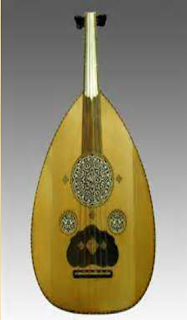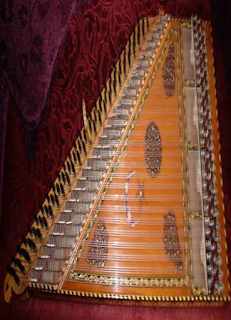Chalgia or chalgija is a special genre of Macedonian folk music.
Macedonian chalgia is rooted in the music code of many generations. This music represents base and structure for many contemporary musical forms and also represents a distinctive phenomenon which blends folklore with heritage of music tradition of Istanbul, both Byzantine Church music and Classical Ottoman in one, corresponding with the Octoechos and Maqam system.
Beside this, chalgia connects the difference between Eastern and Western musical heritage, with mixing of the Oriental and West European instruments in the same time.
The word "chalgia" is a Turkish word meaning:
1) whistle,
2) musical instrument.
"Çhalgacija" or çalgici is the musician that plays chalgia music. According to the dictionary of Blazhe Koneski, chalgia is:
1) instrument for playing, musical instrument,
2) group of musicians, music, musician.
In explaining the term, Blazhe Koneski goes further by giving it an orchestral mark, which is still present in Macedonia as such.
However, the incredibly original, rich and extremely numerous musical forms, created in a period of only a century and a half, testify to a musical quality much more valuable than if chalgia would be just a "copy of the Turkish musical expression", as some consider it.
 |
| An old chalgia ensemble |
The musical and rhythmic structures in chalgia are derived from the Macedonian folk language, which in the city came into contact primarily with Byzantine church singing, Turkish classical music, but also with folk music of all ethnicities living on the soil of Macedonia. In such a spiritual constellation, in time, the Macedonian melody gave birth to a perfectly original and specific tonal dialect and musical expression called - "Macedonian chalgia".
 |
| Chalgia ensemble |
Čalgija is performed by ensembles with instruments such as a dajre (tambourine) and tarabuka (hourglass drum) providing percussion for ut (lute), canon (zither), kemane and clarinet (also known as grneta) on the other.
 |
| Ut (lute) |
 |
| Canon (zither) |
All of this was merged into the so-called Old City Tradition, an urban style that emerged by the end of XVIII century and it reached its zenith in the XIX and XX century. These chalgia groups are a result of an urban music tradition from this period and it was a widely popular music in its heyday. When one refers to chalgia it usually refers to an older type of chalgia.
There are two styles that are prevailing in this tradition. The first one originates from secular Byzantine music and through classical Turkish music it synthesizes elements from the Orient and the Mediterranean, which are ultimately filtered through the rich musical tradition and life of the Macedonian people. The later style of music is somewhat new and its beginnings can be traced back to the 1920's, still building upon the characteristic sound imagination manifesting itself not only within the frames of a single musical phrase, but in a wider context, thus enabling it to incorporate and express the spirit of the new century. According to its melodic and formal structure, this tradition is one of the most developed traditional musical forms that have existed in an urban setting. 
Kemane
 |
| Tarabuka (hourglass drum) |
 |
| Klarinet |
 |
| Dajre (tambourine) |













No comments: